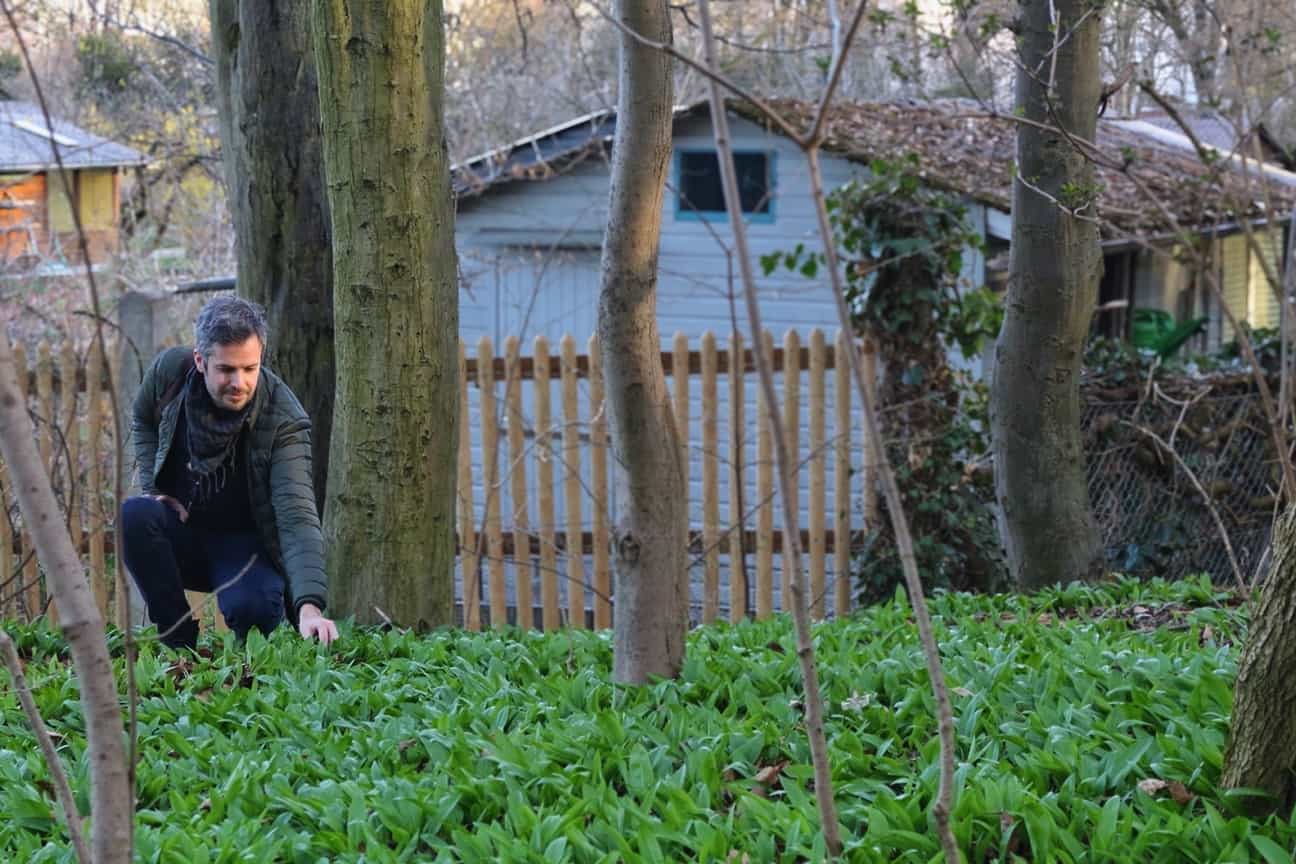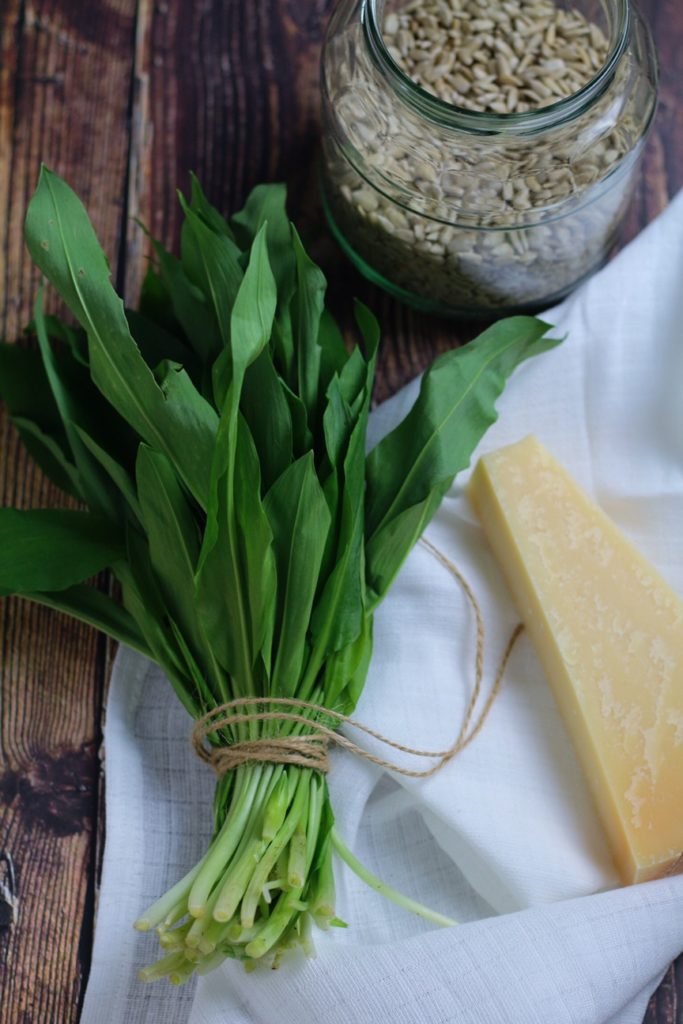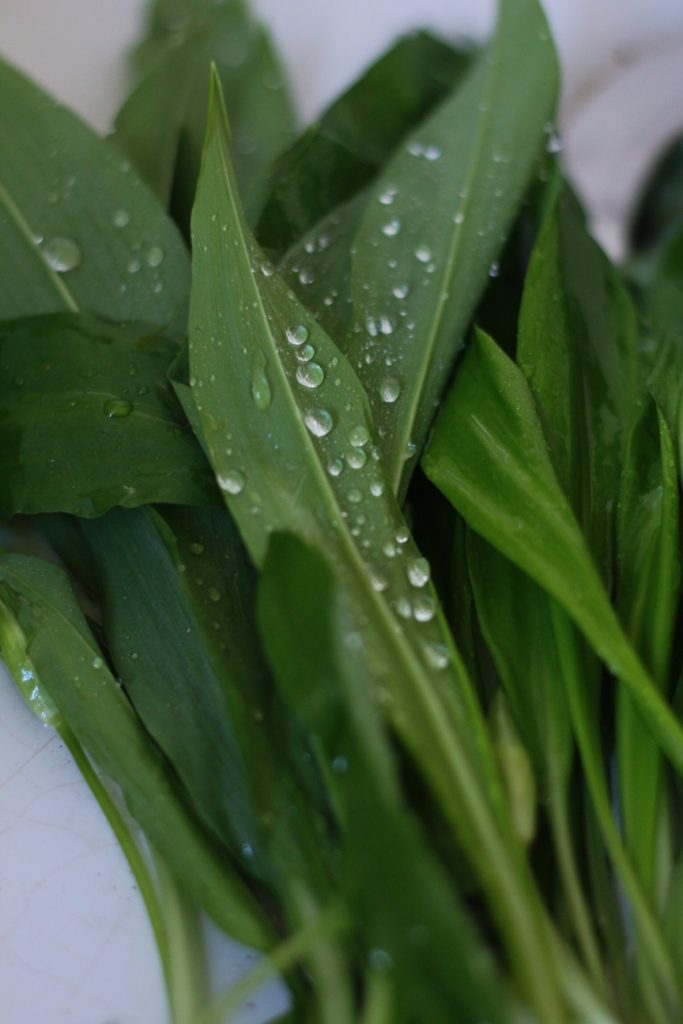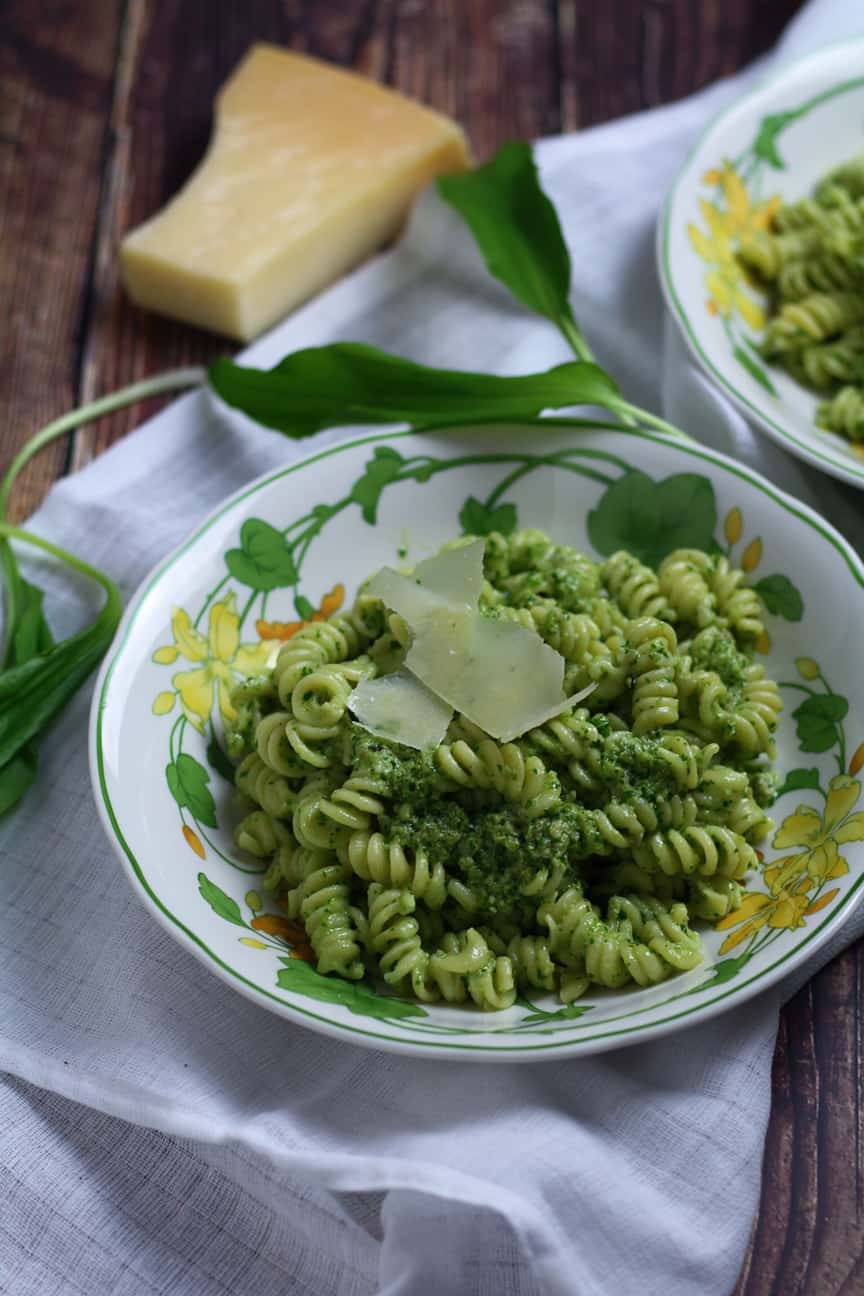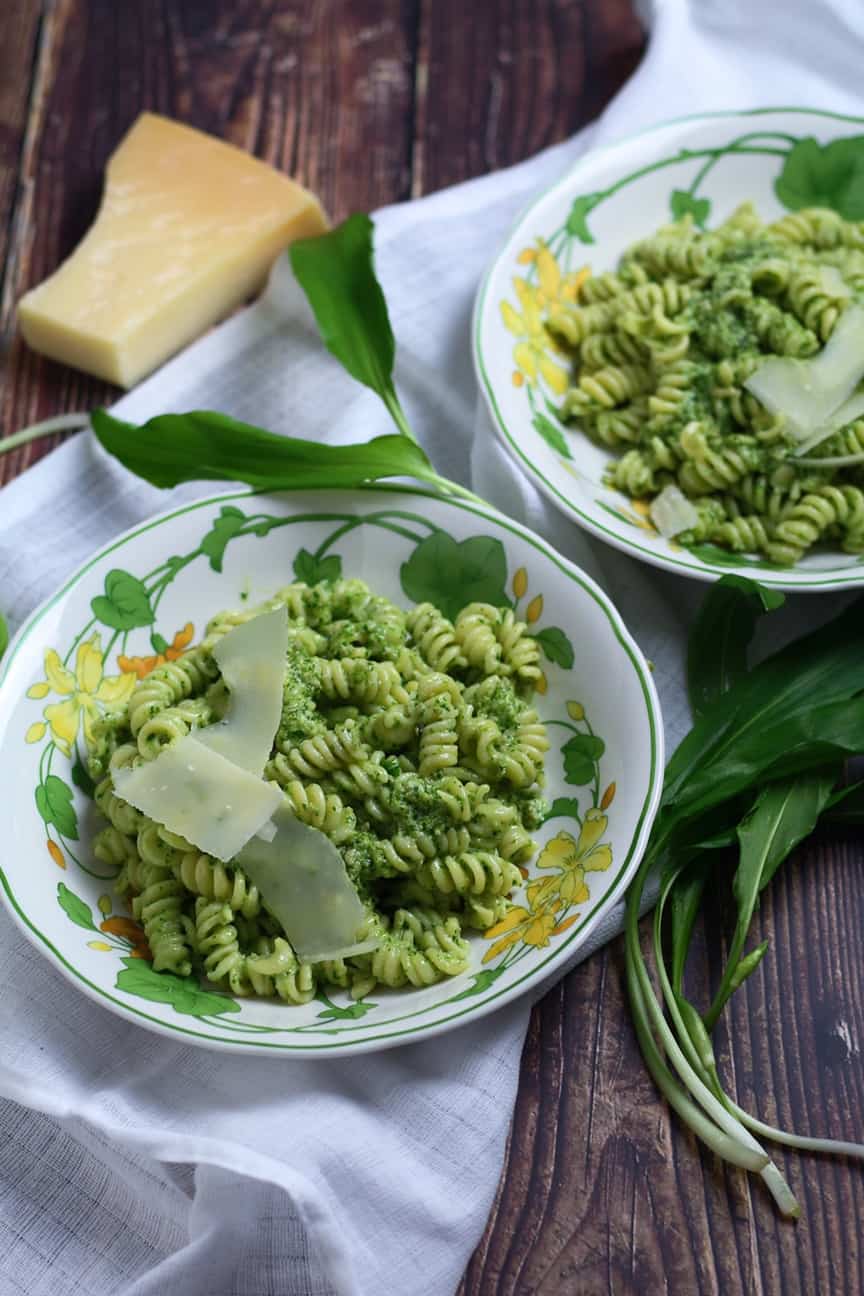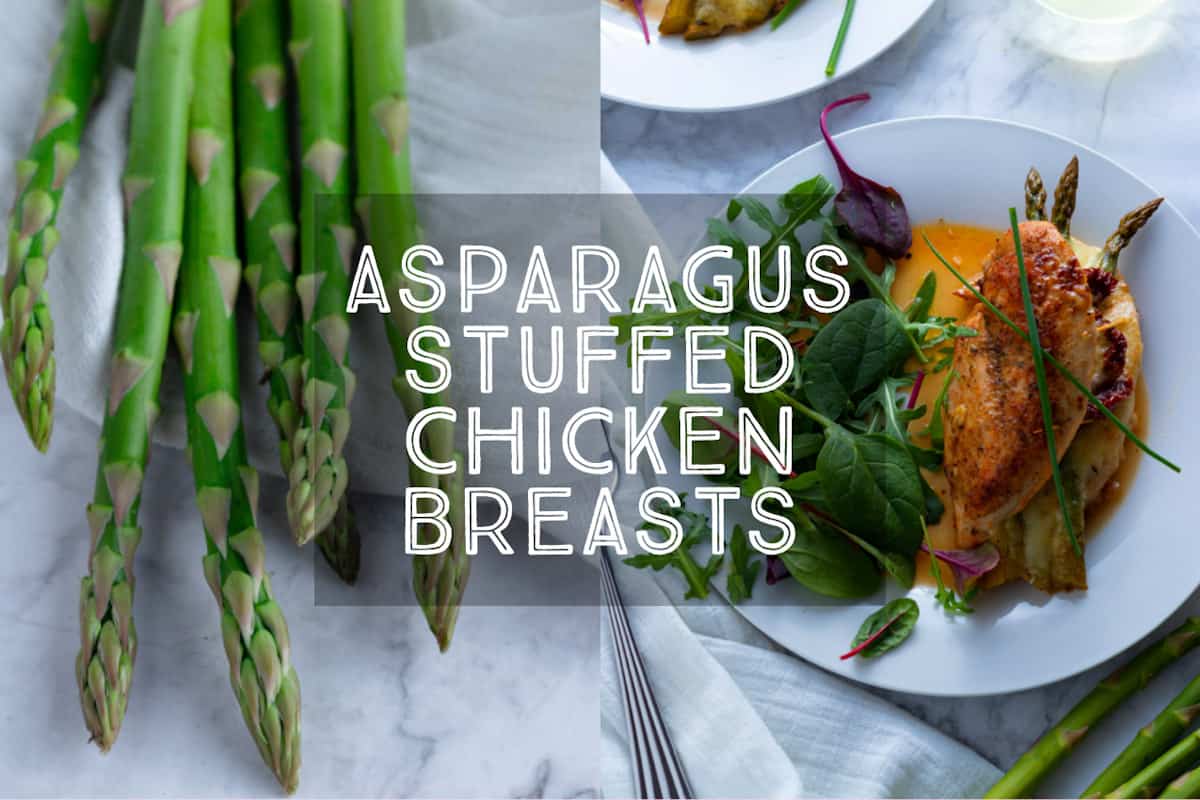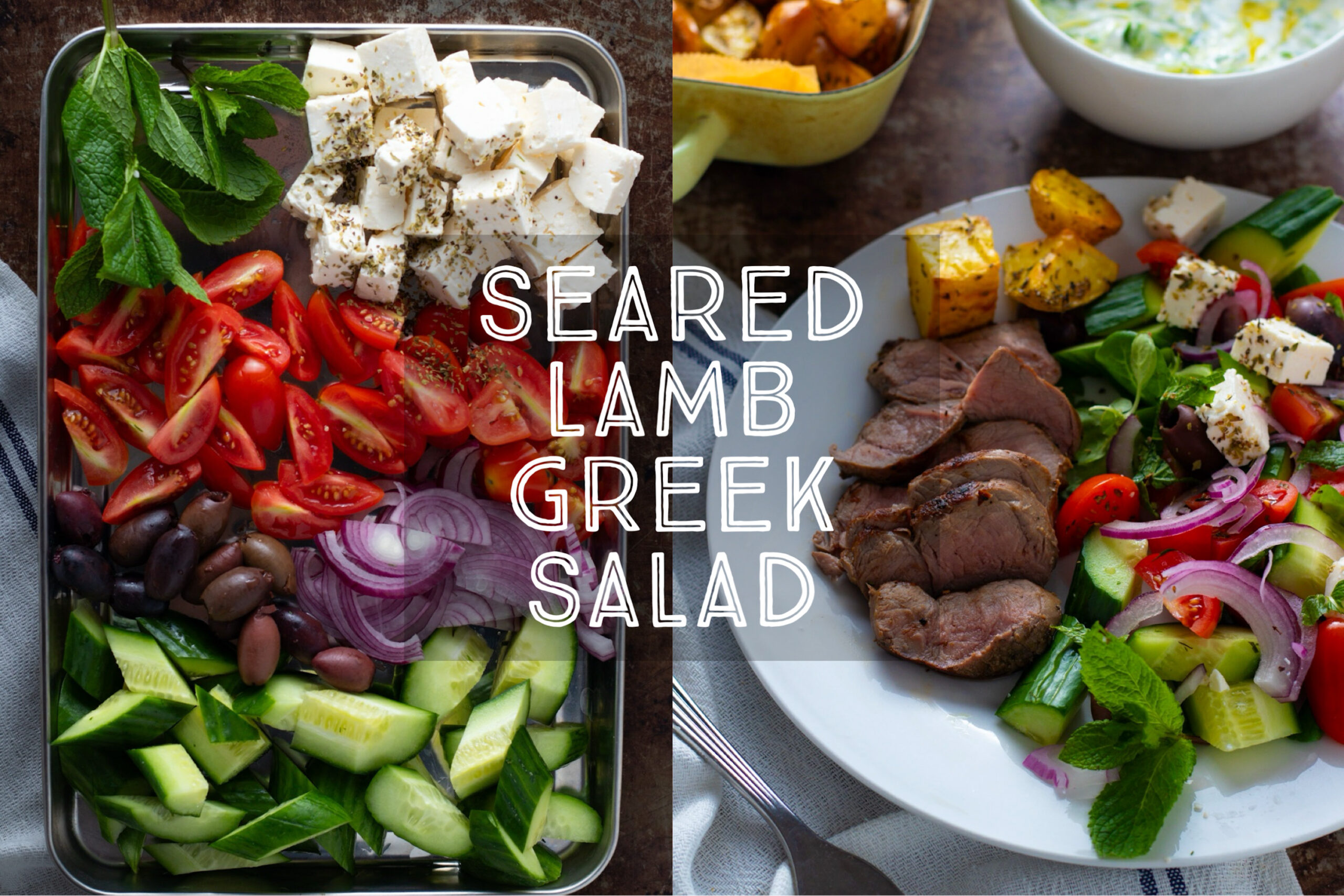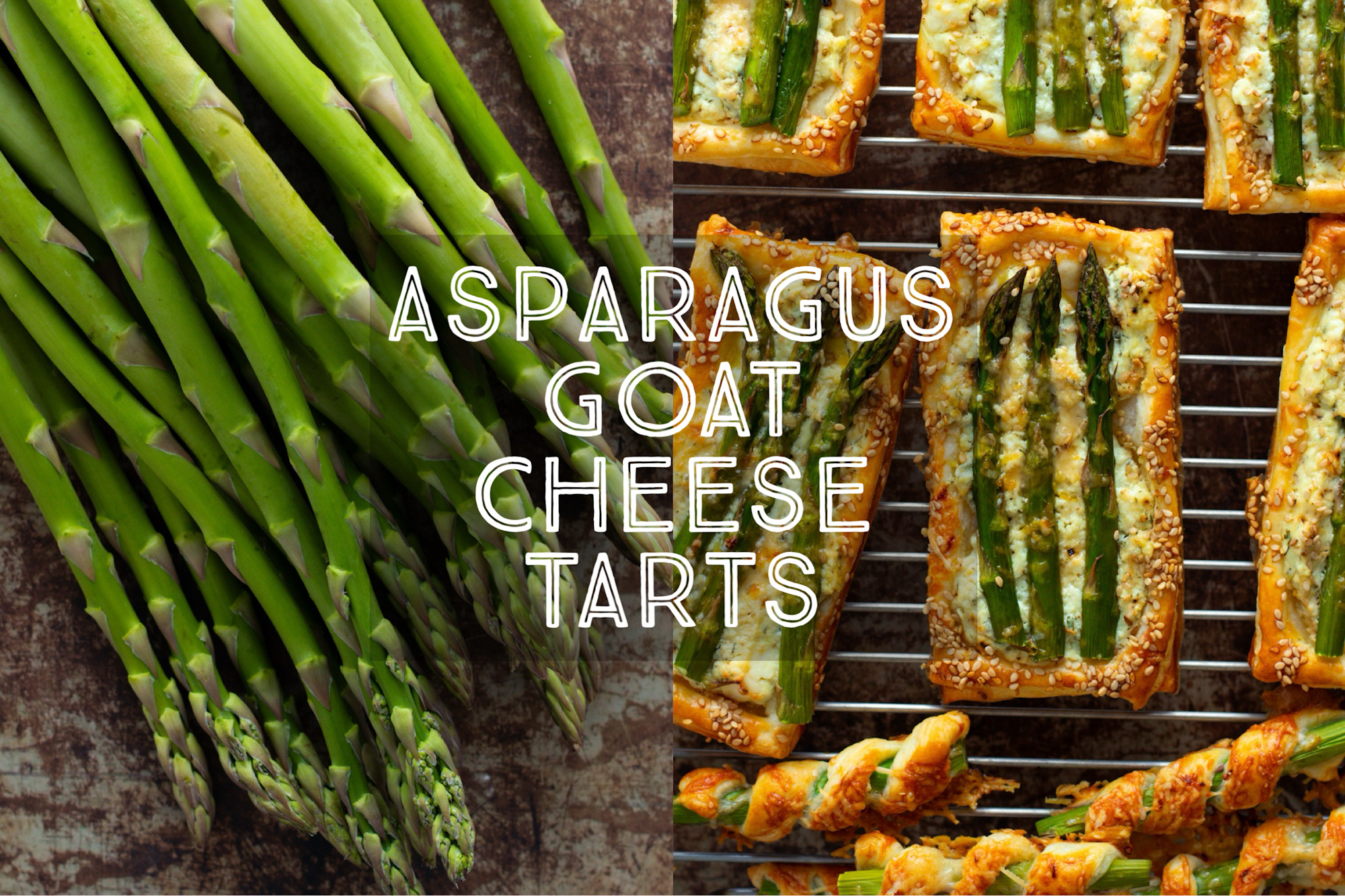
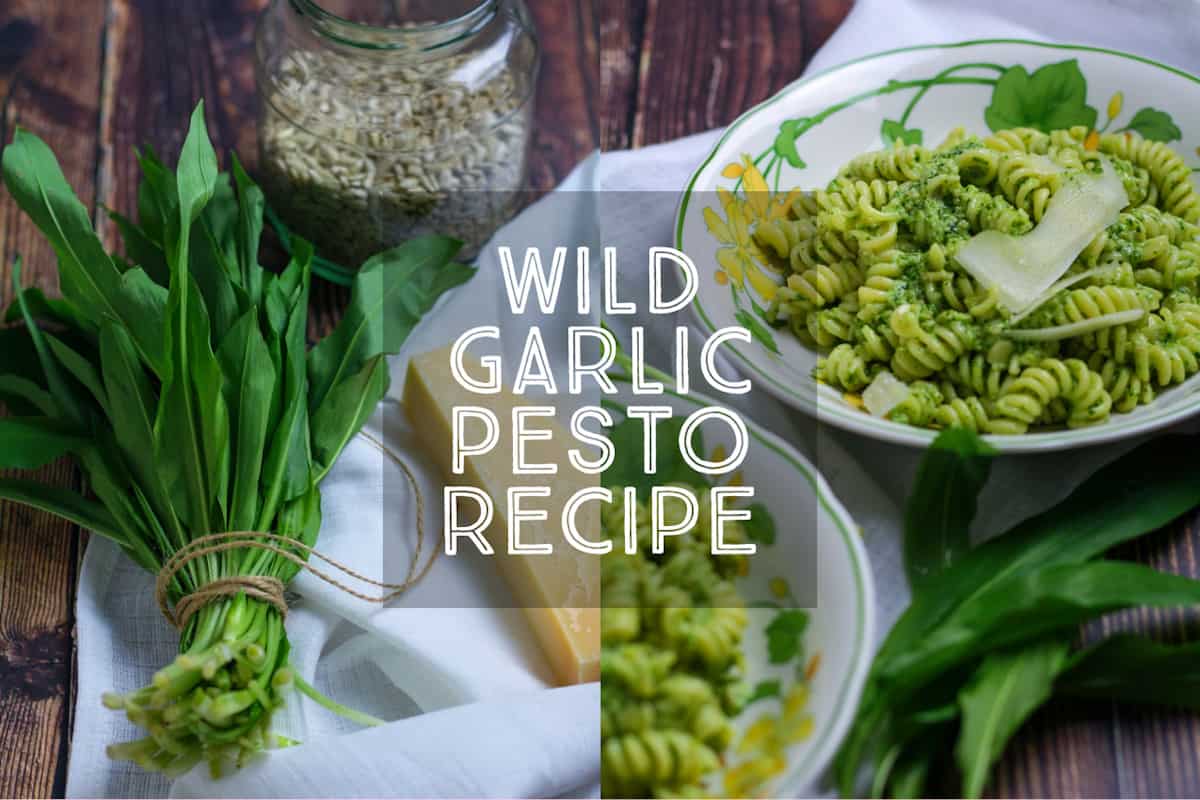
Wild Garlic Pesto (with Ramps!)
The surest sign of spring is the first vibrant green leaves of wild garlic or Bärlauch. It's abundant in the woods right now and is delicious whipped into this quick and easy pesto.
At this time of year, the Bavarian woods are full of Bärlauch (Bear’s Garlic), or wild garlic. Better known in the English-speaking world as ramps or ramsons, the bright green leaves of Allium Ursinum or Allium tricoccum are a welcome sign of spring.
Better yet, they are so tasty and perfect for making a fragrant batch of Wild Garlic Pesto! This delicious pesto is glorious stirred through fresh pasta, drizzled over salmon or stuffed inside chicken breasts. Yum!
TABLE OF CONTENTS
▼
When to Harvest Wild Garlic
The first shoots of wild garlic appear during the first warmer weeks of spring. Depending on the year, you can harvest them from late March to mid-May.
The flat green leaves of this aromatic plant are one of the very first plants to poke their heads from the ground after a long winter, so they are very hard to miss, so grab them in the short time they are available.
Foraging tips
If you are new to foraging, have a quick look online to ensure you can accurately spot the leaves of wild garlic, as there are a couple of imposter plants, like Lily of the Valley, which are not safe to eat.
The pungent smell of garlic is a dead giveaway, so if you are unsure if you are dealing with wild garlic, crush a leaf between your fingers. You’re good to go if it smells like garlic and makes you hungry!
When you bring your wild garlic home, wash it well under cold running water and pat it dry with a paper towel.
Wild Garlic Pesto Ingredients
To make Wild Garlic Pesto, you’ll need the following simple ingredients:
- Wild Garlic: The star of the show! Use the freshest wild garlic leaves you can find and wash them thoroughly. Later in the season, remove any stems or damaged parts of the leaves.
- Pine Nuts or Sunflower Seeds: Pine nuts are traditionally used in pesto but can be expensive. This pesto is equally delicious with sunflower seeds, as they also give a lovely creaminess and nuttiness when blended. If budget is not an issue, go right ahead and use pine nuts!
- Parmesan Cheese: Parmesan cheese adds a depth of flavour to the pesto. You can substitute with Grana Padano or a vegan alternative if you cook for vegans or vegetarians.
- Olive oil: While many recipes call for extra virgin olive oil, I find a milder blended oil better in this recipe. The olive oil flavour should be balanced with the delicate flavour of the wild garlic.
- Salt: Salt also balances this pesto’s flavours and helps preserve it.
The complete ingredient list and method are in the recipe card at the bottom of the page.
How to use Wild Garlic Pesto
I like to stir this pesto through pasta for a simple meal, but it is excellent thinned with vinegar or lemon juice as a salad dressing.
Try mixing it with cream cheese and serving it as a dip. It’s also a wonderful sauce with steak, chicken, or salmon.
Health Benefits
Wild Garlic is packed with nutrients! Not only is it full of vitamin C, magnesium and beta-carotene, but it is also antibacterial and anti-inflammatory. Studies have even shown it is effective in lowering blood pressure. Tasty and healthy, win-win!
FREQUENTLY ASKED QUESTIONS
How do I identify wild garlic?
There are lots of great videos online helping you to identify wild garlic, but it is usually very easy to spot. Remember, the telltale sign is the intense and unmistakable aroma of garlic when you crush a leaf between your fingers.
CAN I USE OTHER SEEDS OR NUTS?
Definitely! Sunflower seeds are abundant and economical and have a fairly neutral flavour allowing the wild garlic to shine, but you could easily use pine nuts if you are feeling lavish. Pumpkin seeds, almonds or hazelnuts are good too.
HOW LONG WILL THE PESTO KEEP?
As long as you use a sterilised jar and keep the pesto in the fridge or freeze it. It will keep for up to a year when frozen. It never lasts long in my house though, as I like to eat it straight away!
Wild Garlic Pesto Recipe
Wild Garlic Pesto
The surest sign of spring is the first vibrant green leaves of wild garlic or Bärlauch. It's abundant in the woods right now and is delicious whipped into this quick and easy pesto.
Ingredients
- 100 g wild garlic greens
- 75 g sunflower seeds or pine nuts
- 125 ml olive oil or sunflower oil
- 50 g grated Parmesan or Grana Padano cheese
- ½ tsp sea salt
- a squeeze of lemon juice
- freshly ground black pepper
Instructions
- PREPARE: Wash the garlic greens well under running water, then spin them in a salad spinner or pat dry with a paper towel. Chop roughly, then place in the bowl of a food processor along with the sunflower seeds.
- PROCESS PESTO: Process the leaves and seeds to a rough paste, then, with the motor running, drizzle in the oil until you have a smooth paste. Adding a dash of cold water will help to thin the pesto if necessary.
- ADD FLAVOURING: Stir through the Parmesan, salt, lemon juice and pepper, then taste and correct seasoning as necessary.
- STORE: Store in a clean, sterilised jar or airtight container in the fridge or freezer, covering the top of the pesto with a layer of oil to keep the colour fresh and to stop oxidisation.
Notes
- Olive oil will set in the fridge, changing to an opaque colour. Don't worry; the olive oil will return to normal as soon as your pesto warms up.
- When freezing, either freeze in jars, leaving a small amount of space at the top, or in ice cube trays. The little blocks of pesto are great for adding to soups and stews straight from the freezer!
As an Amazon Associate and member of other affiliate programs, I earn from qualifying purchases.
Nutrition
Serving: 1 portion | Calories: 179kcal | Carbohydrates: 3g | Protein: 3g | Fat: 18g | Saturated Fat: 3g | Polyunsaturated Fat: 4g | Monounsaturated Fat: 10g | Cholesterol: 4mg | Sodium: 206mg | Potassium: 54mg | Fiber: 1g | Sugar: 1g | Vitamin A: 215IU | Vitamin C: 1mg | Calcium: 52mg | Iron: 1mg
Tried this recipe?I’d love to hear how it went! Please leave a review or a star rating and let me know how it was! Use the hashtag #daysofjay on Instagram so I can see your delicious creations.
If you enjoyed this recipe, please leave a star rating in the recipe card and share it using the buttons below so that others can find it too!

About the Author
Jay Wadams is a cookbook author, food photographer, and graduate of Le Cordon Bleu in Gastronomy and Nutrition.
Based in Italy 🇮🇹 Germany 🇩🇪 and Australia 🇦🇺.



